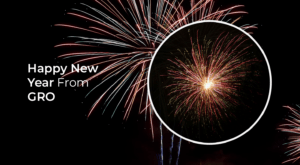A strategy that has gained significant traction in recent years is reactive marketing. This approach involves responding to real-time events, trends, or customer feedback to create timely and relevant marketing campaigns. Reactive marketing can boost engagement, increase brand awareness, and even drive sales when done right. Let’s dive into reactive marketing and explore some prime examples of brands that nailed it.
What is Reactive Marketing?
Reactive marketing is all about agility and responsiveness. It’s the art of tapping into current events, trending topics, or immediate feedback to create campaigns that resonate with the audience in the moment. Unlike traditional marketing, which involves long-term planning and execution, reactive marketing is more spontaneous and requires a keen eye on what’s happening around the world.
Why is Reactive Marketing Effective?
1. Relevance: People are more likely to engage with content that feels timely and relevant. By aligning your campaigns with what’s happening now, you can capture your audience’s attention more effectively.
2. Engagement: When done well, reactive marketing can spark conversations and encourage interactions. This can lead to increased brand visibility and a stronger connection with your audience.
3. Brand Personality: Reactive marketing allows brands to showcase their personality and values. Whether it’s through humour, empathy, or social commentary, it’s a chance to humanise your brand.
Examples of Reactive Marketing Done Right
1. Oreo’s Super Bowl Tweet
One of the most famous examples of reactive marketing is Oreo’s tweet during the 2013 Super Bowl blackout. When the lights went out, Oreo quickly posted a simple yet clever tweet: “You can still dunk in the dark.” The tweet went viral, receiving thousands of retweets and likes, and is often cited as a masterclass in real-time marketing.
2. Greggs and the Vegan Sausage Roll
When Greggs launched its vegan sausage roll in January 2019, it sparked a media frenzy. Piers Morgan, a well-known TV personality, tweeted his disdain for the product. Greggs’ response, “Oh hello Piers, we’ve been expecting you,” was a perfect example of reactive marketing. The tweet garnered massive attention and helped propel the product’s success.
How to Implement Reactive Marketing
1. Stay Informed: Keep a close eye on news, social media trends, and industry happenings. Tools like Google Alerts, Twitter trends, and news apps can help you stay updated.
2. Be Quick: Timing is everything in reactive marketing. The faster you can respond to a trend or event, the more impactful your campaign will be.
3. Know Your Brand Voice: Ensure your reactive marketing efforts align with your brand’s voice and values. Consistency is key to maintaining your brand identity.
4. Engage Responsibly: While jumping on trends can be beneficial, it’s important to be sensitive to the context. Avoid controversial or sensitive topics that could backfire.
So next time there’s a major event or a trending topic, don’t just sit on the sidelines. Seize the moment and let your brand shine in real-time.



